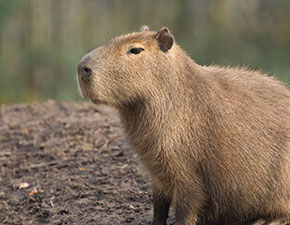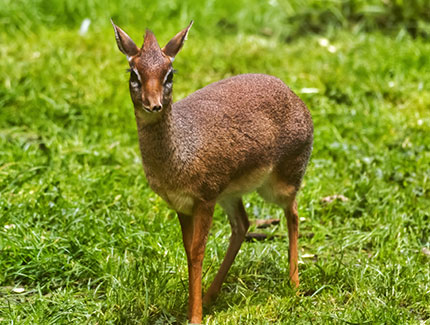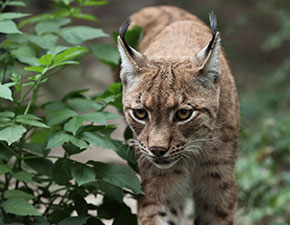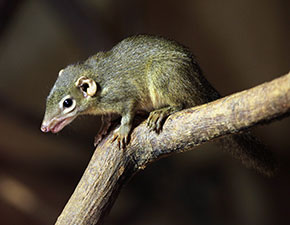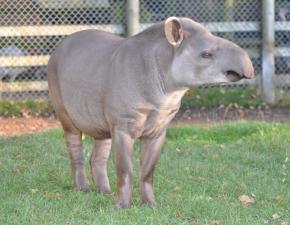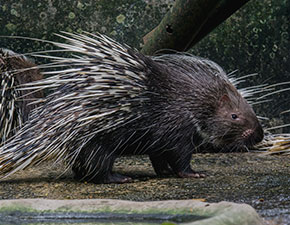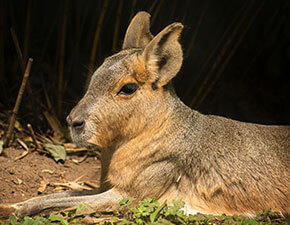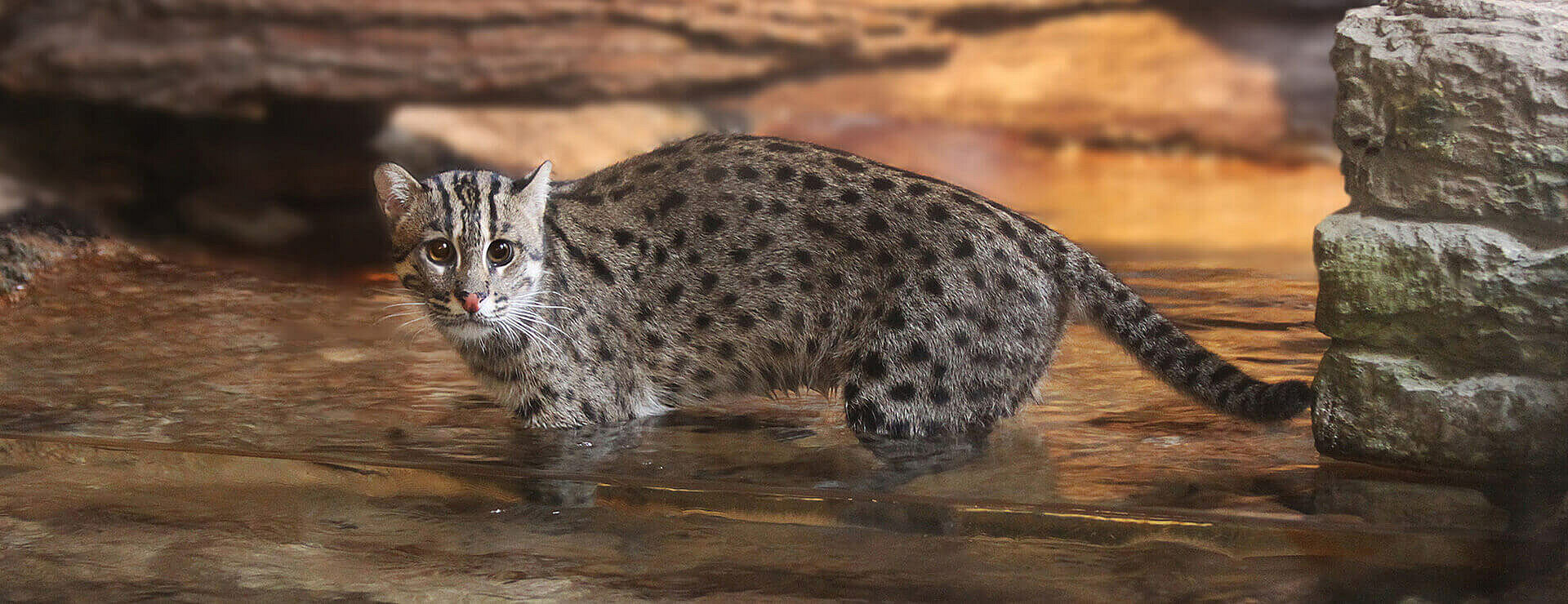
Fishing Cat
Prionailurus viverrinus
IUCN red list status:
Vulnerable
For more information, please visit iucnredlist.org

The Fishing Cat is sporadically distributed throughout southern and southeast Asia. They inhabit areas of wetland, including swamps and marshy areas.

Their diet mainly consists of fish but will also consume frogs, crustaceans, snakes, birds, small mammals and carcasses of larger animals.

They live an average of 12 years, but have been known to live more than 15 years in captivity.

They give birth to up to four kittens, after a gestation period of 63 days. Young suckle until they’re six months old and reach independence at ten months.
Fishing Cat
About the Fishing Cat
The Fishing Cat's coat is a camouflaged grey-brown with distinctive black spots and stripes. Six to eight black lines run from the cat's forehead to its neck, breaking up into shorter bars and spots. One remarkable feature is the layered structure of their fur, a crucial adaptation to life in the water. Next to the skin lies a layer of short hair so dense that water cannot penetrate it. Fishing cats are one of the best swimmers around and are completely at home in the water.
Fishing cats are generally found in wetland areas, such as marshes, swamps and mangrove forests. Their habitat is also linked with species of rodents that they eat. These cats can also be seen in cultivated grasslands and agricultural areas with standing water.
Did you know?
Larger than a domestic cat, the Fishing Cat spends most of its life in areas of dense vegetation close to water and is an excellent swimmer!
